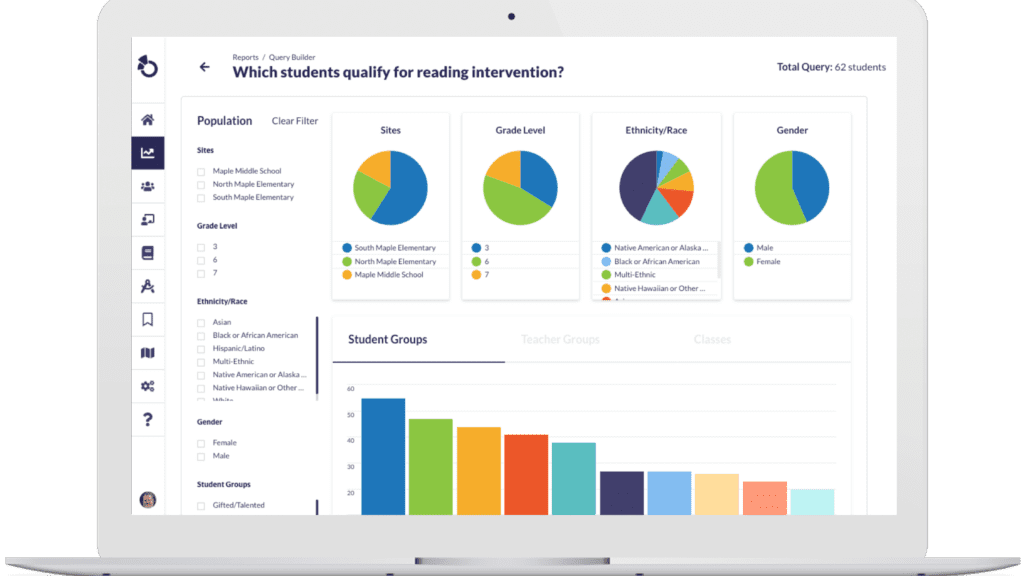Using Otus Plans for Post-Pandemic Social-Emotional Learning
By: David Specht
The pandemic is the largest disruption to education in history, derailing learning for 1.6 billion students worldwide. While the majority of US schools have returned to in-person instruction, many are still dealing with the effects of COVID. In January 2022, one in four grade school students in the U.S. missed more than a week of in-person learning, according to a national survey of nearly 150,000 parents.
The disruptions caused by the pandemic have devastated not only student academic achievement but students’ mental health, including social and emotional development. Up to one in five kids in the U.S. shows signs or symptoms of a mental health disorder each year, and nearly 80% don’t have access to the appropriate mental health services. With so many students navigating mental health issues and social and emotional development deficits on their own, it comes as no surprise that these struggles manifest as behavioral issues in the classroom. Schools report that students are in some cases withdrawn socially and not participating in class, and in more extreme cases, acting out toward classmates and teachers, causing disruptions to instruction.
The power of plans
Development of social and emotional skills is equally, if not more, important than academic learning. It’s crucial that students acquire and effectively apply the knowledge, attitudes and skills necessary to understand and manage emotions, set and achieve positive goals, feel and show empathy for others, establish and maintain positive relationships, and make responsible decisions. To ensure that students are developing in these areas, educators must develop student plans and check in with them throughout the school year, especially during blended or remote learning. Luckily, technology affords them the opportunity to do so quickly and efficiently.
One tool that schools can use to track, manage, share and act on student development is Otus Plans. Using this Otus feature, educators can build a comprehensive profile of each student and discover areas where students can grow by seeing individual strengths, interests, performance and more. With that data, they can set achievable milestones that guide students on the path toward academic, behavioral and social-emotional goals. Educators can also gather and track data about how students are doing outside of the classroom. Stakeholders, such as teachers, administrators and parents, can monitor progress, make informed decisions to support students and measure the effectiveness of interventions.
Most schools already create some form of “plans” for students, but these are usually not customized, centralized or consistent from one classroom to the next. As a result, these plans can be ineffective, and difficult to communicate with stakeholders and track over the course of a student’s academic career. With Otus, educators can create custom plans tailored to each student, easily monitor student progress as a team and edit plans as needed. Educators can even build templates for various interventions, behaviors and more that can be applied to other students.
Every student deserves a plan
The need for a personalized learning plan for every student is more important now than ever before, yet most students lack a formal plan that will produce meaningful results. Using Otus, educators can identify specific areas where students need support and chart a unique path forward. To illustrate how Otus Plans work, we’ve created two example student personas: Max and Maddie. Each example portrays a different type of student, their traits, a custom plan designed by their teacher and the unique goals they’re working toward.

Max
Student Persona
- 7th-grade student
- Historically has been outgoing and friendly toward other students and teachers
- Recently is withdrawn, engaging less in class and spending recess alone
Max’s Otus Plan
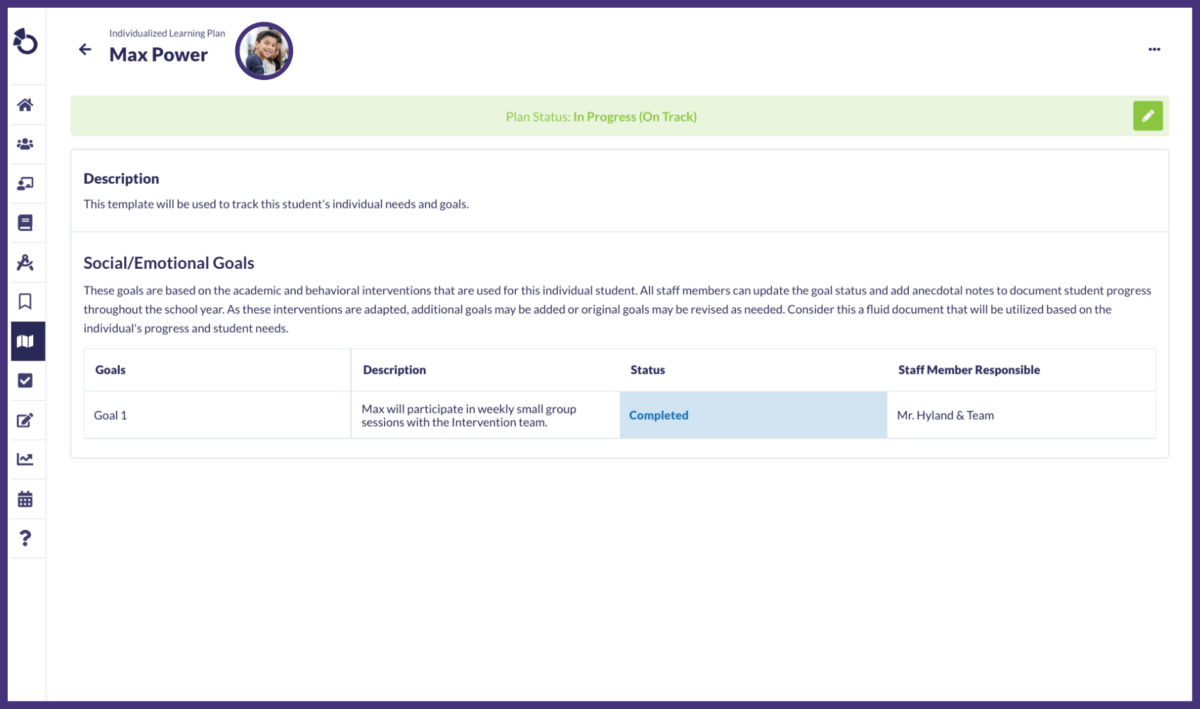
Using Plans, educators can create, track and visualize progress on custom goals. Max’s teacher, Mr. Hyland, created a goal (Goal 1) for Max to participate in a weekly small group session with the intervention team at his school.
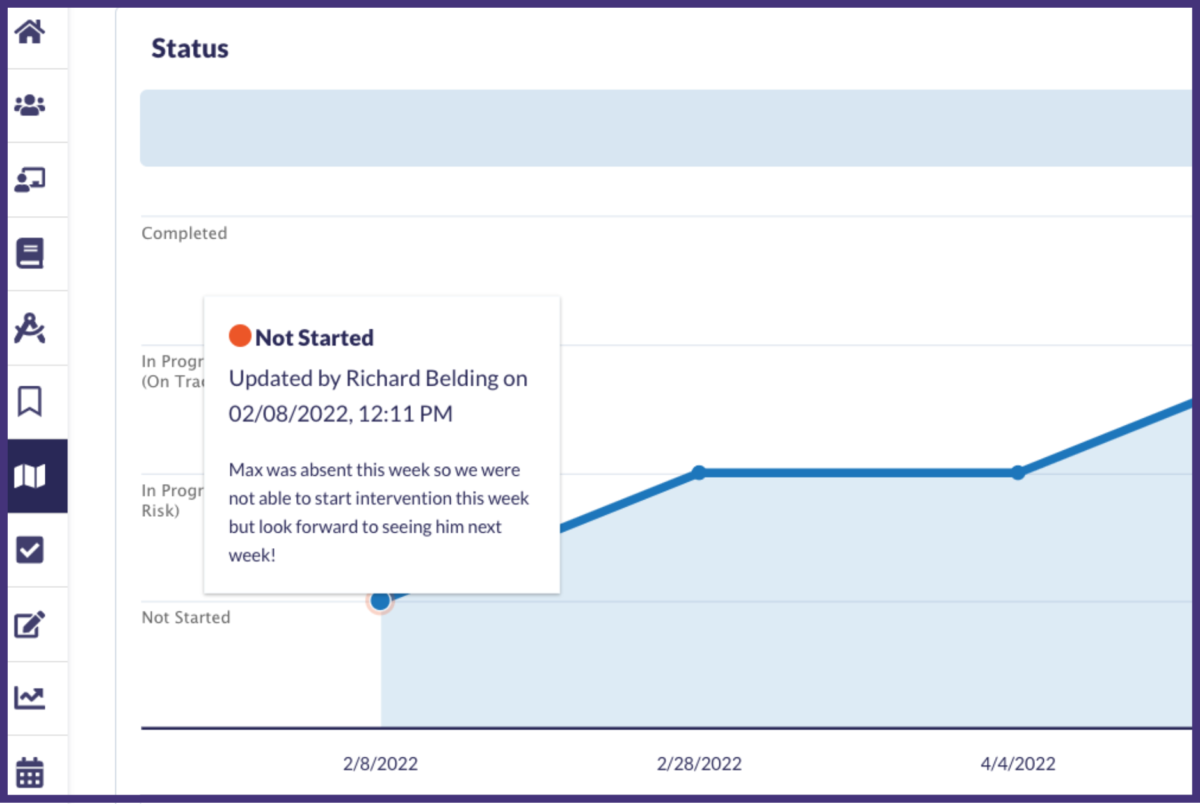
Any time there is an update on his goal, Max’s teachers can add it to the Plan. Whether Max made progress, regressed or, as is the case in this example, missed a day of class, updates are detailed and time stamped so that stakeholders can follow along on Max’s journey to his individual goal.
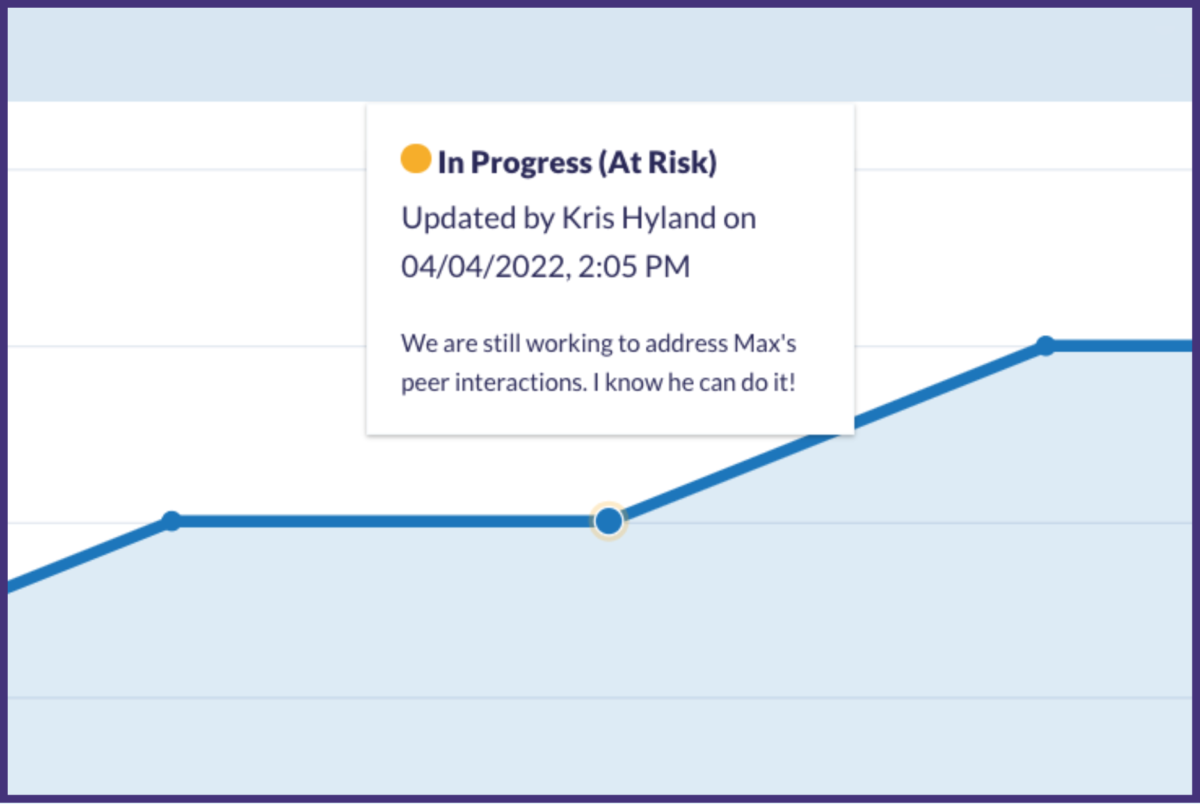
As Max progresses through his Plan, the data is automatically visualized, making it easier to understand where Max began and where he might be headed.
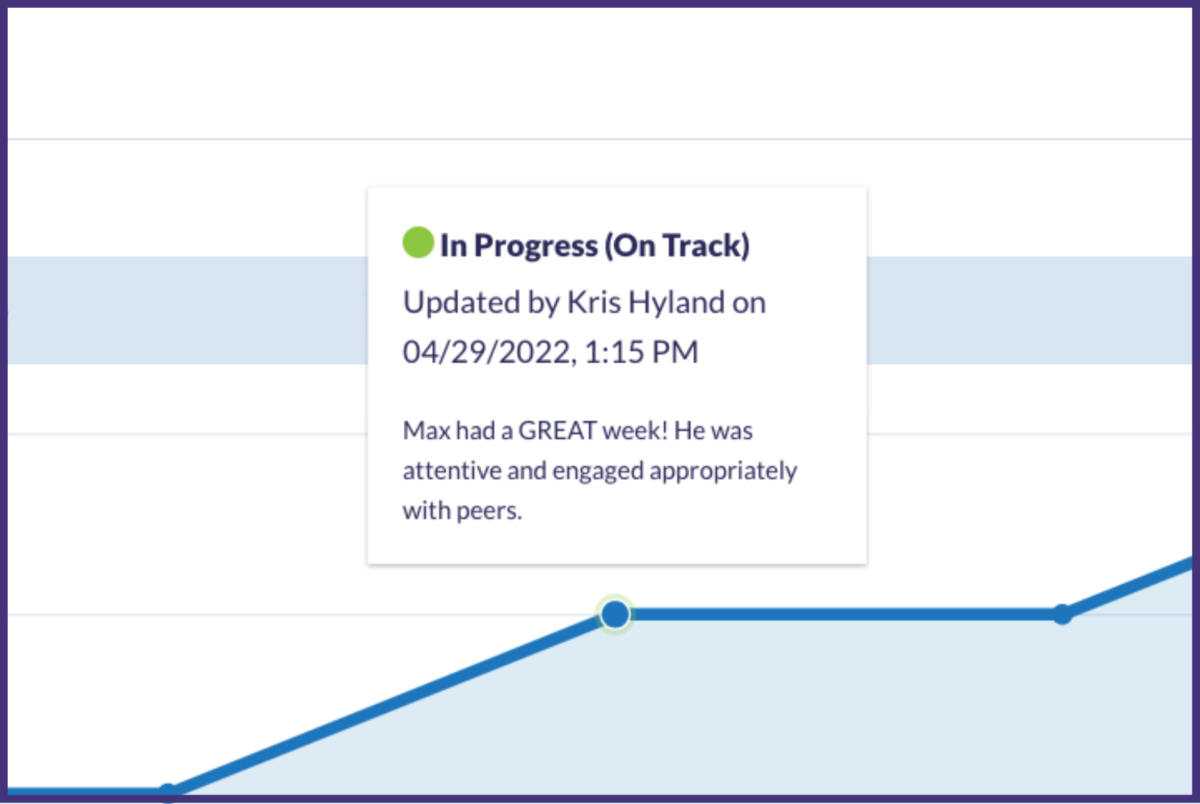
As Max nears his goal, teachers can see the status climb from “Not Started” in early February to “In Progress (At Risk)” in April, and finally to “In Progress (On Track)” later that same month.

In early June, Max achieved his goal of meeting weekly with the intervention team. One of Max’s teachers, Richer Belding, updated Max’s goal to “Completed” and left a note detailing the results.

Madison
Student Persona
- 9th-grade student
- Historically has been reserved but never demonstrated poor behavior
- Recently is verbally acting out toward other students and has been causing disruptions in class
Madison’s Otus Plan
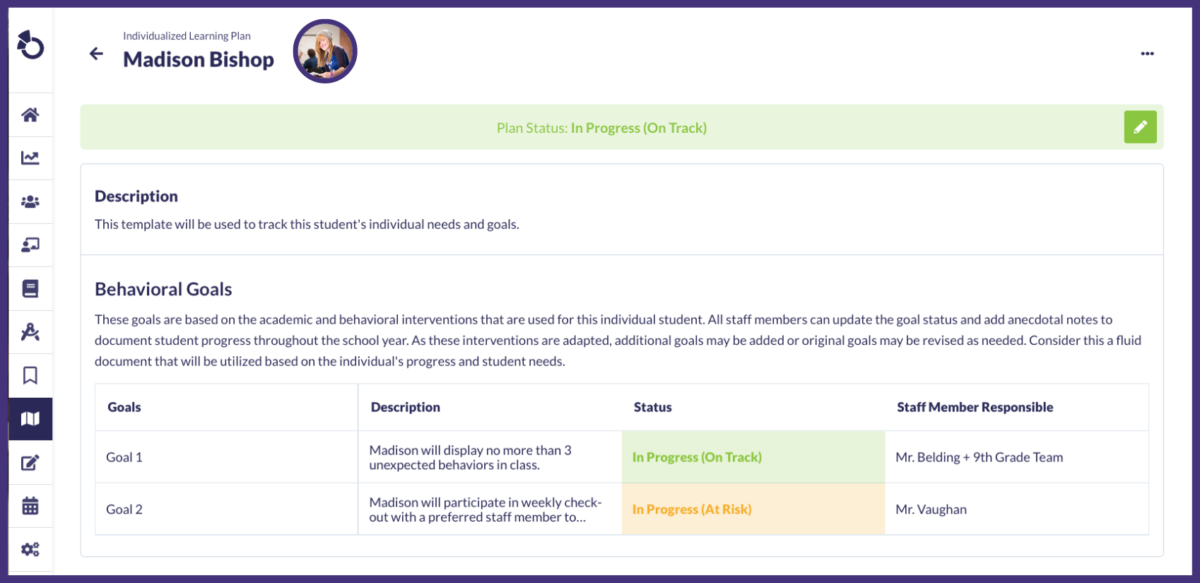
Due to the nature of Madison’s recent behavioral changes, her teachers, Mr. Belding and Mr. Vaughn, deemed it necessary to create two goals for her: Madison will display no more than three unexpected behaviors in class, and Madison will participate in weekly check-out with a preferred staff member.
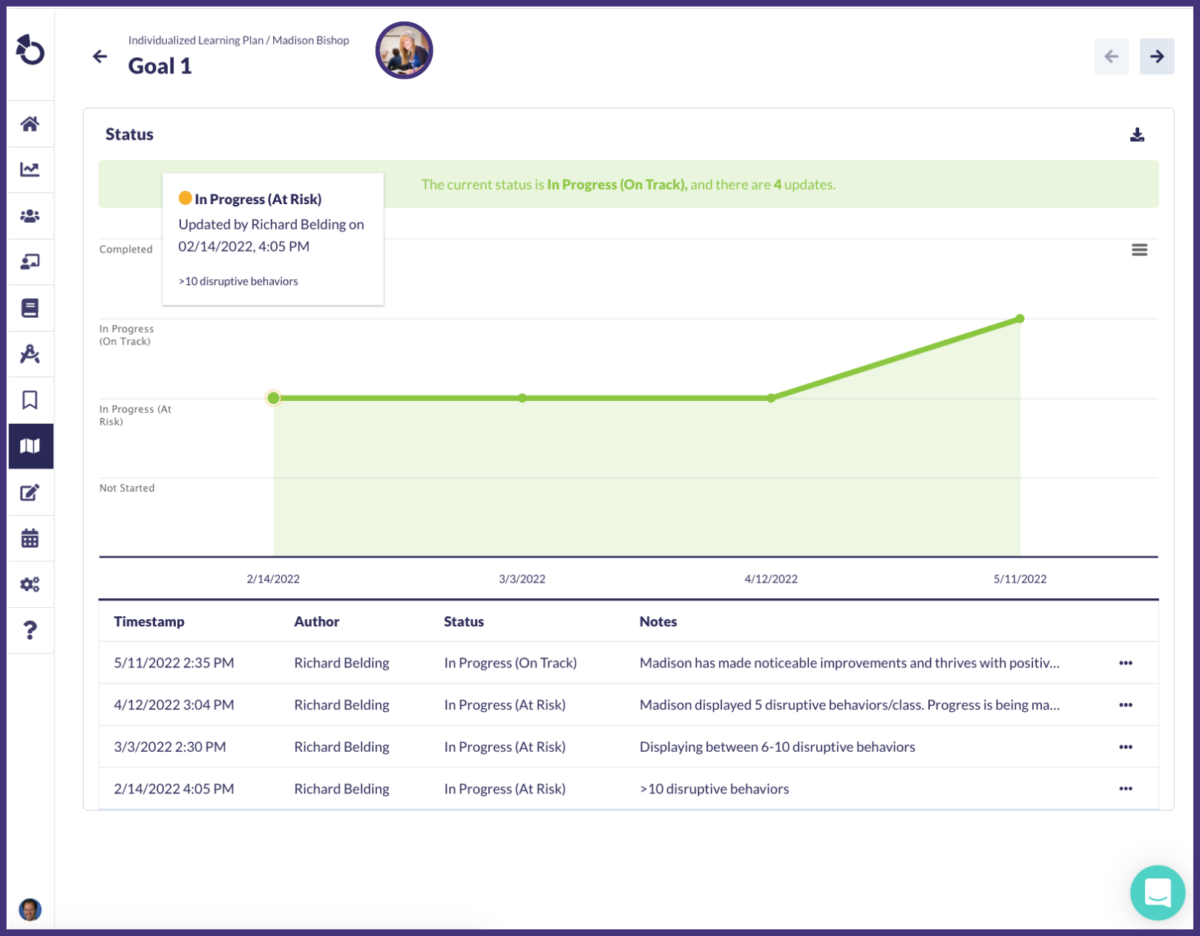
When Madison first began working toward Goal 1 in her Plan, she was displaying more than 10 disruptive behaviors in class each day. In February, her Goal 1 was In Progress (At Risk).
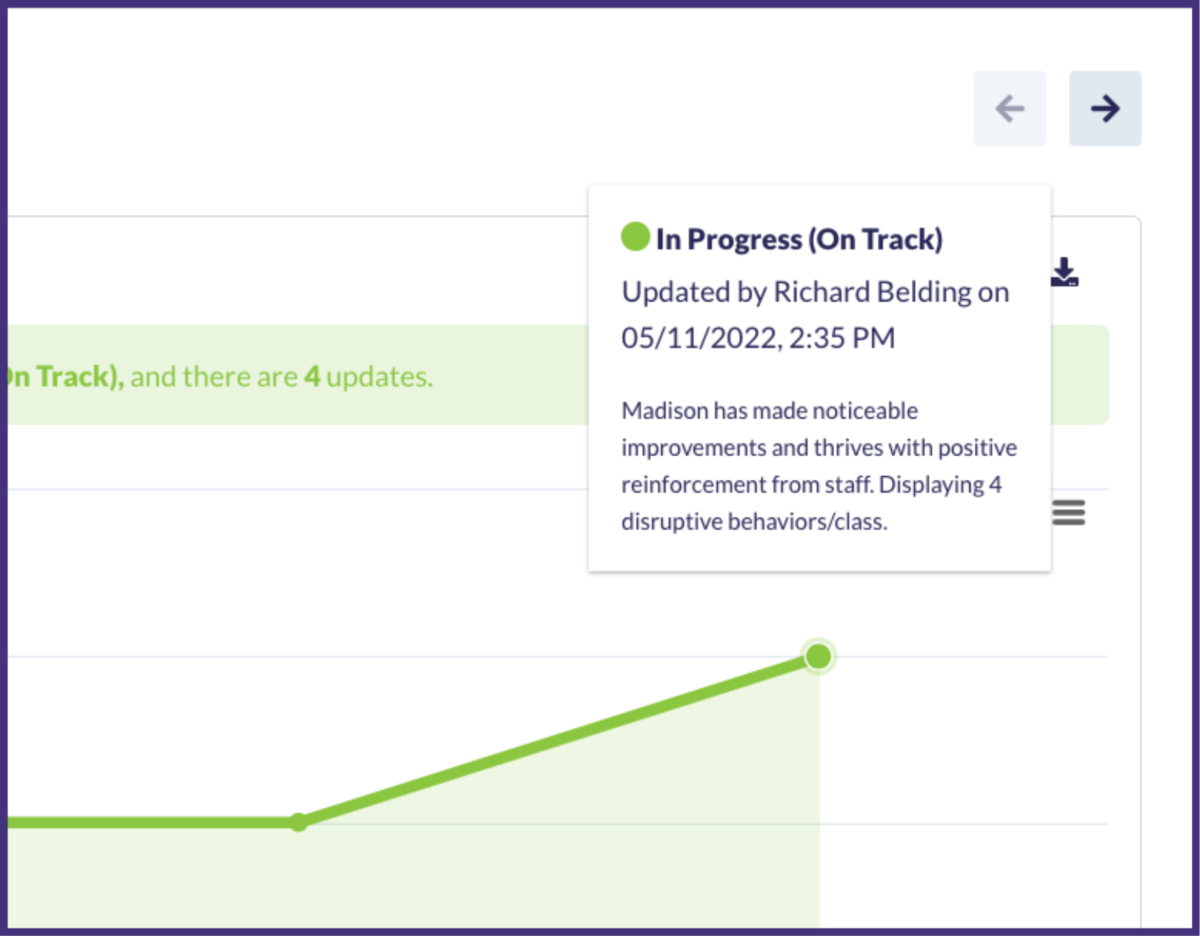
Through March and April, Madison continued to display more than the three disruptive behaviors in class each day, meaning Goal 1 remained In Progress (At Risk). She continued to improve and in May was displaying only four disruptive behaviors in class, which graduated the status of her goal to In Progress (On Track).

Madison’s teacher, Mr. Belding, shared detailed entries to Goal 1 in Madison’s Plan. In doing so, Madison’s teachers can compare the progress of Goal 1 and Goal 2 to see if the weekly check-out with staff correlates to the decrease in disruptive behavior.
Charting a path forward
While the examples of Max and Madison outlined above illustrate one case of extreme behavioral change and one case that demonstrates what might be considered a subtle loss of social proficiency, both are equally deserving of a custom plan to support their recovery and growth. Every kid is experiencing some level of loss since the pandemic, some more drastic than others. Classroom closures have upended students’ development not only academically, but behaviorally, socially and emotionally. With school resuming this fall, it’s crucial that educators are equipped to help students catch up in all of these areas. Otus Plans can help educators gauge students’ academic and social-emotional status, identify potential issues and map a path forward for each student. Educators and parents can track student progress year over year, meaning the plans you create this fall won’t just help students in your class but will guide your students' progress throughout their entire academic journey.
We believe every student deserves a plan because it’s not about where they start – it’s where they’re going that matters.
Request a demo!
See exactly how Otus can help your school accelerate student growth and improve student outcomes – all while saving educators time.
